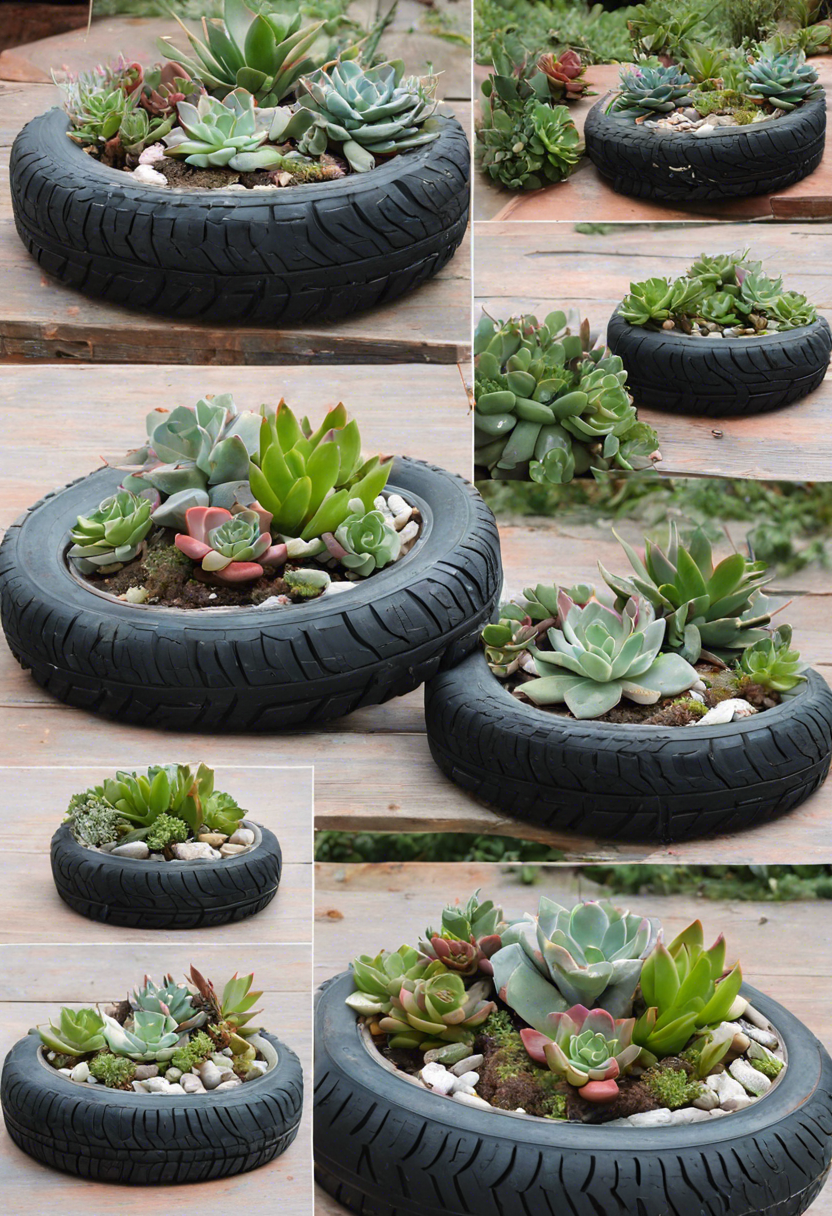
Succulent Tire Planter is a unique and creative way to display succulent plants in your garden or outdoor space. It adds a touch of charm and whimsy to any area, while also being an eco-friendly way to repurpose old tires. In this article, we will explore the step-by-step process of creating a succulent tire planter, along with some helpful tips and tricks to ensure its success.
Gathering Materials
The first step in creating a succulent tire planter is to gather all the necessary materials. Here’s a list of what you’ll need:
- Old tire(s)
- Drill
- Screws
- Screwdriver
- Potting soil
- Succulent plants
- Moss or decorative rocks (optional)
Preparing the Tire
Start by cleaning the old tire thoroughly to remove any dirt or debris. Once clean, use a drill to make drainage holes in the bottom of the tire. These holes will ensure proper drainage and prevent waterlogging, which can be harmful to succulent plants.
Securing the Tire
Next, find a suitable location for your succulent tire planter. It could be a garden bed, patio, or even a balcony. Once you’ve chosen the spot, use screws and a screwdriver to secure the tire in place. This step is important to prevent the tire from rolling or tipping over.
Planting the Succulents
Now comes the fun part – planting the succulents! Fill the tire with potting soil, leaving some space at the top for the plants. Gently remove the succulents from their pots, loosen the roots, and place them in the soil. Arrange them in a visually appealing manner, considering colors, sizes, and textures. You can also add moss or decorative rocks to enhance the overall look.
Caring for the Succulent Tire Planter
Proper care is essential for the longevity and health of your succulent tire planter. Here are some care tips:
- Water sparingly: Succulents prefer dry conditions, so avoid overwatering. Only water when the soil is completely dry, and make sure to drain any excess water.
- Provide adequate sunlight: Succulents thrive in bright sunlight. Place your tire planter in a location where it can receive at least six hours of indirect sunlight daily.
- Protect from extreme weather: While succulents are hardy plants, they can still be damaged by extreme temperatures. If you live in an area with harsh winters or scorching summers, consider moving the tire planter indoors or providing some protection.
- Fertilize occasionally: Succulents don’t require frequent fertilization. Use a balanced, low-nitrogen fertilizer once or twice a year to provide the necessary nutrients.
- Monitor for pests: Keep an eye out for common succulent pests like mealybugs or aphids. If you notice any infestation, treat it promptly to prevent damage to your plants.
The succulent tire planter is a fantastic DIY project that adds a touch of beauty and greenery to any outdoor space. With a few simple steps and minimal maintenance, you can create a stunning display of succulent plants that will be the envy of your neighbors. So, gather those old tires, get creative, and enjoy the process of transforming them into unique and eye-catching planters!